Spot A Shark USA
Spot A Shark USA
By Tanya Houppermans
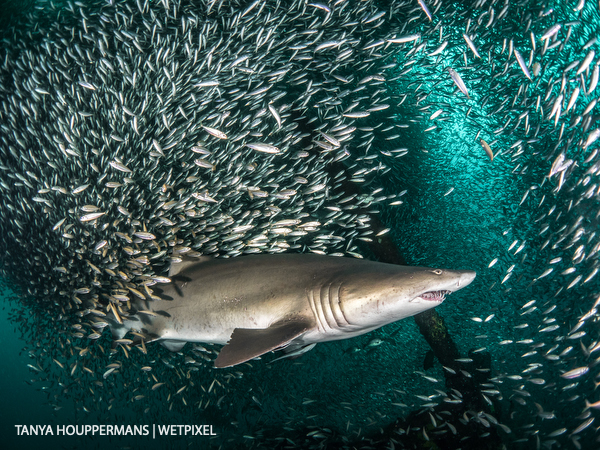
Many of us who take pictures underwater do so because we care immensely about our oceans and the animals who live there. This is especially true when it comes to sharks, who have one of the most undeservedly negative reputations in the animal kingdom. While our images of sharks in their natural environment go a long way in showing the public that they are not mindless monsters, we often wonder what more we can do to help these misunderstood animals. Enter Spot A Shark USA, a citizen science program that allows underwater photographers to directly contribute to research and conservation efforts for sand tiger sharks (Carcharias taurus) that inhabit the waters along the east coast of the United States.
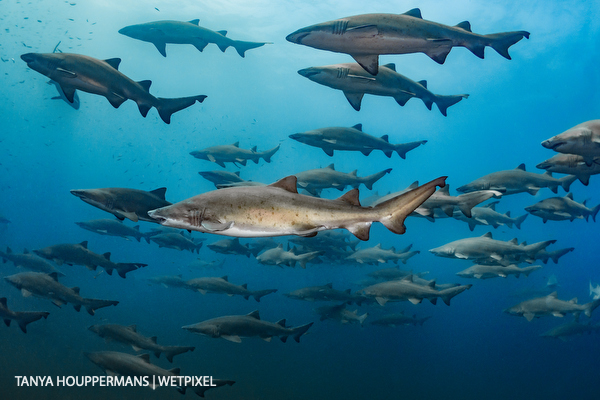
Spot A Shark USA was developed by the North Carolina Aquariums, the South-East Zoo Alliance for Reproduction and Conservation, and their affiliated partners to study the health of northwestern Atlantic sand tiger populations. The premise is simple: A photographer takes a photo of a sand tiger shark, uploads that image to the Spot A Shark USA website along with the dive location and the date the photo was taken, and the software then analyzes the unique spot patterns on each shark to either match that shark up with a previously-identified shark or log it as a new individual in the database. Divers can also add additional information about their encounter such as the sex of the shark, any behaviors observed, the water temperature, visibility, etc.
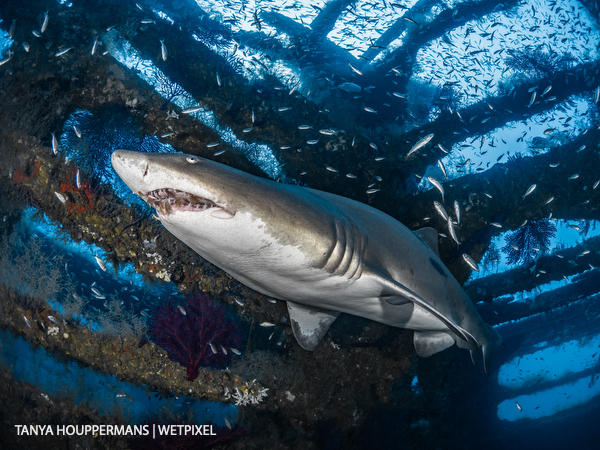
But why study sand tigers in the first place? These fierce-looking but docile sharks experienced significant population decline during the 1980s and 90s due to overfishing and habitat degradation. Although sand tigers have been granted protected status in U.S. waters since 1997, the species is still listed as ‘Vulnerable’ on the International Union for the Conservation of Nature Red List of Threatened Species. Scientists believe that sand tiger populations may be slowly recovering, but more research is needed to determine the extent. In addition, very little is known about where sand tigers mate and give birth, what their migratory patterns are, why they tend to aggregate in large groups at certain times of the year, and why they can often be found on, in, and around the many shipwrecks lining the North Carolina coast. Sand tiger sharks also have the lowest reproductive rate of any shark species, only producing 1-2 pups every 2-3 years. This makes it especially difficult for sand tiger populations to recover once they have been overexploited. Therefore, gaining more knowledge of sand tigers and their habitat usage is critical to determining the best ways to help and protect them.

Fortunately, a tremendous opportunity exists to gather this much-needed information thanks to North Carolina’s reputation as a world-class dive destination. Divers from around the world flock to North Carolina’s warm, clear waters to dive the shipwrecks and see the wildlife that frequent these wrecks such as sea turtles, barracuda, southern stingrays, large schools of jacks and spade fish, and of course the sand tiger sharks. The majority of divers carry a camera to document their experience, whether that be a GoPro, compact camera, or larger mirrorless or DSLR kits. An image of a sand tiger shark taken with any these can be uploaded to the Spot A Shark USA website so long as it is properly exposed with minimal backscatter, in jpeg format no larger than 2 megabytes, and shows the left or right side of the shark with the shark’s spots clearly visible. Once a diver has uploaded an image, they can opt to receive updates about any future sightings of that shark. Divers can also look up individual sharks on the Spot A Shark USA website to see additional images supplied by others of that shark.

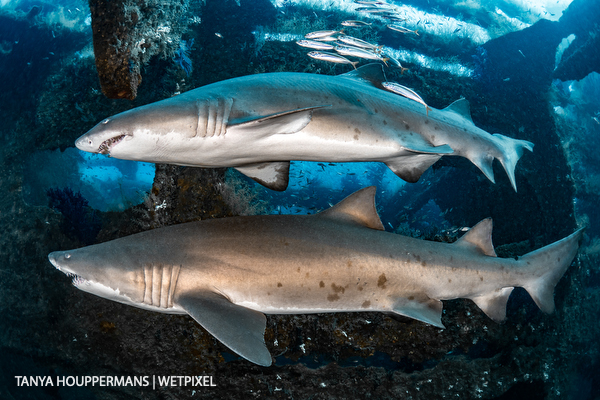
The Spot A Shark USA citizen science program is truly a win-win for both underwater photographers and sharks. Photographers can come home with great images of the sleek, toothy, and ever-photogenic sand tigers, and in the meantime help to ensure their survival. For more information on how you can help, visit the Spot A Shark USA website at www.spotasharkusa.com.
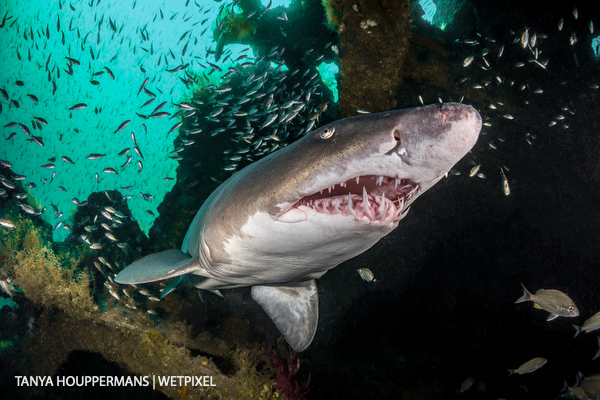
About the Author:
Tanya Houppermans is an internationally-recognized, multiple award-winning photographer specializing in images of the natural world, especially below the water’s surface, while advocating for the protection of the world’s marine ecosystems through education and conservation.
Spot a Shark USA is a citizen-science program that engages anyone who spends time on the water in sand tiger shark research along the Atlantic coast. Divers, snorkelers, and others are asked to photograph encounters with sand tiger sharks and post their images to the Spot A Shark USA website.